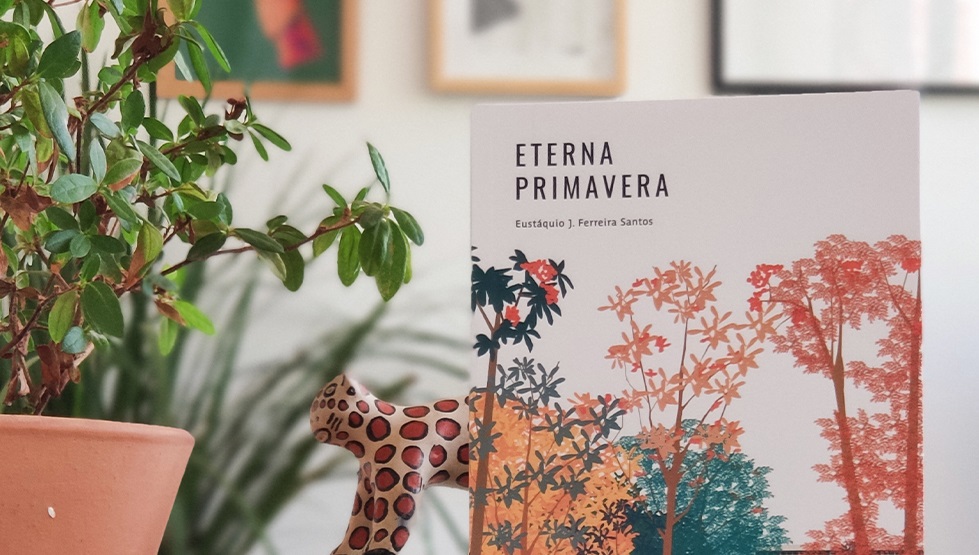The launch will take place on September 22, at 7 p.m., with a chat and autograph night, at Livraria Travessa.
To this day, the retired architect, urban planner, professor and public servant Eustáquio Ferreira Santos does not forget the day he arrived in the future capital of the country. It was 1958, and the 14-year-old saw construction sites open before his eyes. In the truck his father had bought, he and his family came from Annapolis (GO) to help build the dream of Central Brazil. “I saw the skeletons of buildings in the park and was curious how they were made, and from what materials. All this was, my gift.”
The curious eyes of a boy from Minas Gerais born in São Gottardo have won a precious record in the book “Eterna Primavera”, which collects 186 stories focused on the “capital to do” that has become the intangible heritage of humanity.
The launch will take place on September 22, 7pm, with a talk and autograph night, at Livraria Travessa (Casa Park), where books will be distributed free of charge. With a hard copy of 1,500 copies, the work is distributed free of charge thanks to the Culture Support Fund of the Federal District (FAC).
“When I walk in space, I scan every inch. I look at the trees, I see the number of birds, I perceive the relationship between nature and man. It is an organic movement. So, the log is an exercise in the daily observation of the city, its development and maintenance as a metropolis, and the service infrastructure within the framework of the management public and population interaction”, notes Eustáquio Ferreira, who, for a decade, has been writing diligently on the “Brasilia Ambience” blog.
flowers and architecture
Eustáquio says the inspiration from the title “Eternal Spring” refers to the magic that flowering trees evoke in the capital’s residents. Says the author, who has worked for 20 years in the planning area of the government of the Federal District, where he performed various functions, such as administrator nucleus Bandeirante and director of the Social Interest Housing Association – SHIS.
With graceful language, urban knowledge, and a social conscience, Eustáquio Ferreira traces a historical and crucial portrait of Brasilia. In “Schools were the Work of Famous Architects,” he explains that until the military coup of 1964, educational buildings were signed with names such as José Souza Reyes (Elephant Branco College) and Oscar Niemeyer (Escola Classe SQS 308). “In recent governments, we’ve even had tin schools, built in different kinds of containers, where the heat was unbearable,” he points out.
Environmental concerns, public health, and culture also intertwine with the historian’s view. In “Silêncio, Música e Carnaval,” he discusses the tense relationship between the inhabitants of Plano Belotto and the neighborhood pubs based on the Law of Silence and its consequences. “It is worth remembering the many musicians originally from Brasilia, with national recognition, who began their careers playing in their garages, which would have been impossible under this law.”
Professor and architect Lenin Monteiro highlights that reading “Eterna Primavera” allows the reader to consider the contradictions of the city and extract from them the best and most important: “Unifying the forms of coexistence of Brazilians from different quarters who came here and created a different and decisive way of looking at our land, able to highlight virtues and pointing out the gaps in our development process.”
Part of the “Eterna Primavera” print will be dedicated to libraries, public schools and architecture universities.
brave boy
In 1965, Eustáquio Ferreira was proud to be one of the new architecture students at the University of Brasilia (UnB). He graduated in 1971, with work experience as a mathematics teacher at the Agricultural School of Planaltina, and as a planner for the newspaper Correio Braziliense.
“When I arrived at the University of Brasilia, I had just built a house in Building 704 South. He was a foreman at my father’s company, where he had been working since he was 14. I entered UnB, already besieged by the military coup, and there I became a politicized student. “I became friends with Hunestino, who was present at my wedding,” says Eustaquio Ferreira, who was detained by the military dictatorship for three days during a student protest in which the then-US ambassador participated.
“I came from a more internal point of view, from work and met these young men who arrived from São Paulo and other states with a different political stance on the military coup and censorship. I watched the invasions, I saw many disappear, like my friend Hunsteino, whose body was never found. It helped a lot. of people to escape oppression. I even instructed people to get out in Paraguay,” boasts Eustáquio Ferreira, 77 years old, discussing daily with friends about urbanism and the well-being of Brasilia and Brazil in WhatsApp groups.
service
The launch of the book “Eternal Spring”
September 22, Thursday
From 7:30 pm
Travisa Library, in Casa Park Mall
Continue after the ad

“Prone to fits of apathy. Problem solver. Twitter buff. Wannabe music advocate.”






More Stories
71-Year-Old American Woman to Compete in Miss Texas USA Pageant – Entertainment
Milton Nascimento records an intimate performance with Esperanza Spalding.
Netflix Ends Ad-Free Basic Plan in the US – Entertainment